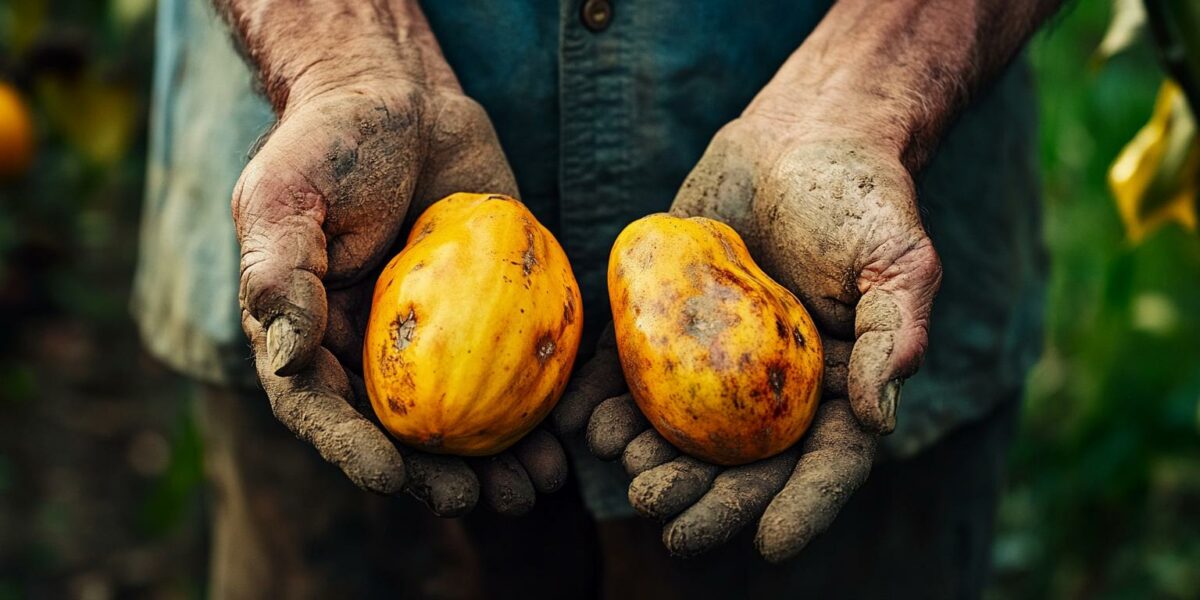Ohio’s Climate Crisis: A Threat to the Pawpaw
North America’s largest native fruit, the pawpaw, is facing unprecedented challenges due to Ohio’s changing climate. This fruit, comparable in size to an avocado and with a taste merging mango and banana, is rarely seen in grocery stores. Its scarcity is now exacerbated by adverse weather conditions.
In Ohio, where an annual festival celebrates the pawpaw, growers report early harvests and bitter fruit. This year’s extreme weather, including spring freezes and persistent drought, has significantly impacted the pawpaw’s quality, making it a cause for concern among local farmers.
Valerie Libbey, an orchard owner in Washington Court House, noticed her fruit dropping early and tasting more bitter than previous years. She attributes these changes to heat-stress and unpredictable weather patterns, a trend echoed by other farmers in the region.
Libbey’s observations are supported by the National Climate Change Assessment, which highlights the increasing frequency of extreme weather events. These conditions are threatening the viability of crops, including the beloved pawpaw, across the Midwest.
Farmers Adapt to Extreme Weather
Growers like Libbey are adapting to these new challenges. She noted that last year’s late spring freezes devastated many blossoms, while this year’s drought shortened the harvest period. These extreme weather events demand new strategies for pawpaw cultivation.
Kirk Pomper, a horticulture professor at Kentucky State University, emphasizes that the changing climate is evident when pawpaw trees flower earlier than usual. This shift poses significant risks to the fruit’s development and overall yield.
Farmers are now preparing for more frequent weather extremes by implementing various measures:
- Enhanced irrigation systems
- Selective breeding of more resilient pawpaw varieties
- Exploration of alternative growing techniques
These efforts aim to mitigate the adverse impacts of climate change, ensuring the survival of this unique fruit.
Challenges Beyond Weather: Invasive Species
Chris Chmiel, a farmer in Albany, Ohio, has witnessed firsthand the compounded effects of erratic weather and invasive species on his pawpaw orchard. Severe weather conditions in recent years have led to a drastic reduction in his tree population.
Chmiel explained that excessive water during wet springs in 2018 and 2019 caused his trees to produce ethanol, attracting an invasive beetle harmful to the plants. This beetle infestation has been one of the biggest challenges for his farm.
Despite these setbacks, Chmiel remains hopeful. He notes that pawpaw trees, which were domesticated by Native American tribes, are inherently hardy. This resilience gives him confidence in their ability to withstand future climate challenges.
The pawpaw’s historical significance and adaptability are central to its potential for overcoming current environmental threats. Farmers like Chmiel are leveraging this resilience to protect their crops from the unpredictable climate.
The Pawpaw’s Future Amidst Climate Change
The pawpaw, once a staple in local diets, now faces an uncertain future. As climate change continues to alter weather patterns, the fruit’s survival depends on the adaptability and resilience of its growers.
Libbey, Chmiel, and other farmers are at the forefront of this battle, employing innovative techniques to safeguard their orchards. Their efforts highlight the broader impact of climate change on agriculture and the urgent need for sustainable solutions.
While the challenges are significant, the dedication of these farmers offers a glimmer of hope. By understanding and responding to the changing environment, they aim to preserve the pawpaw for future generations.
As Ohio grapples with these extreme weather conditions, the story of the pawpaw serves as a poignant reminder of the broader implications of climate change on our food systems and natural heritage.



Zachary_Jade
Are there any local initiatives to support pawpaw farmers in Ohio? I’d love to get involved.
ariana6
This is another example of how climate change is affecting everything. Keep up the great work, farmers!
clara6
I love pawpaws! This is really upsetting news. Thank you for bringing it to our attention.
levi_nebula
Why don’t they plant more resilient varieties of pawpaw from the beginning? Seems like a no-brainer to me!
JasperUnity
It’s sad to see our native fruits struggling. Hopefully, the new strategies will make a difference. 😊
sophiaessence
Valerie Libbey’s story is really eye-opening. I’m curious, how long do pawpaw trees typically take to bear fruit?
TiggerElysium7
Wow, I had no idea the pawpaw was so affected by climate change. What can we do to help the farmers?